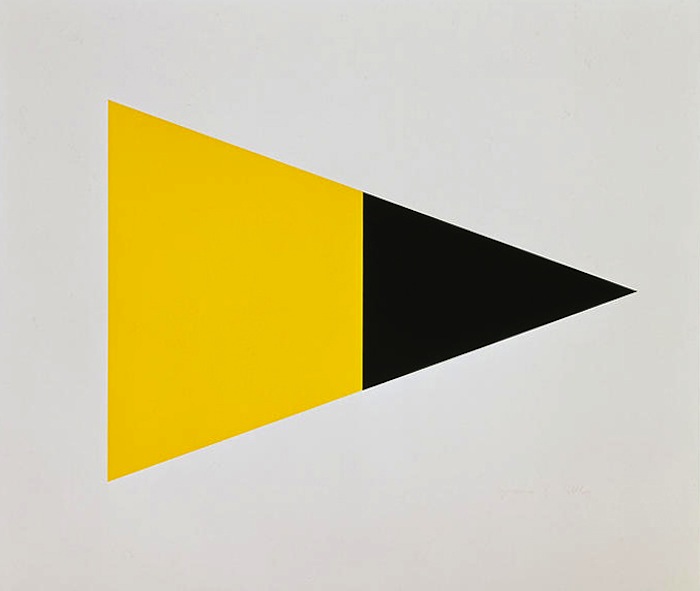Ellsworth Kelly, Black Yellow
Ellsworth Kelly
Black Yellow
1972
Lithograph
34 x 39 3/4 in.
Edition of 55
This piece is pencil signed and numbered.
About This Work:
Ellsworth Kelly assembles his art’s constitute parts until they cohere to some point of emotional or intellectual satisfaction, much like an architect does. Its goal is to have the viewer moved by the purely visual.
This work by Kelly is a perfect example of how the artist juxtaposes discrete colored shapes. The colors lead our eye around the image in a kind of syncopated dance without ever allowing the shape to pop forward or sink back into a recessional space. This print is a “tour de force of restrained geometry and exuberant color.”
About Ellsworth Kelly:
“I have worked to free shape from its ground, and then to work the shape so that it has a definite relationship to the space around it; so that it has a clarity and a measure within itself of its parts (angles, curves, edges and mass); and so that, with color and tonality, the shape finds its own space and always demands its freedom and separateness.”- Ellsworth Kelly
Ellsworth Kelly is an American painter, sculptor, and printmaker associated with Hard-edge painting, Color Field painting and the Minimalist school. His works demonstrate unassuming techniques emphasizing the simplicity of form.
Although Kelly can now be considered an essential innovator and contributor to the American abstraction art movement, he was not always seen in such a positive light. It was hard for many to find the connection between Kelly’s art and the dominant stylistic trends For Example, observing how light fragmented on the surface of water, he painted Seine (1950), made of black and white rectangles arranged by chance.
He created a new freedom of painterly expression. He began working in extremely large formats and explored the concepts of seriality and monochrome paintings. As a painter he worked in an exclusively abstract mode. By the late 1950s his painting stressed shape and planar masses (often assuming non-rectilinear formats). His work of this period also provided a useful bridge from the vanguard American geometric abstraction of the 1930s and early 1940s to the Minimalism and reductive art of the mid-1960s and 1970s.
Kelly has distilled his palette and introduced forms never before. He starts with a rectangular canvas that he carefully paints with many coats of white paint; a shaped canvas, usually painted in a single bright color, is placed on top. The quality of line seen in his paintings and in the form of his shaped canvases is very subtle. The use of form and shadow, as well as the construction and deconstruction of the visible implies perfection.

